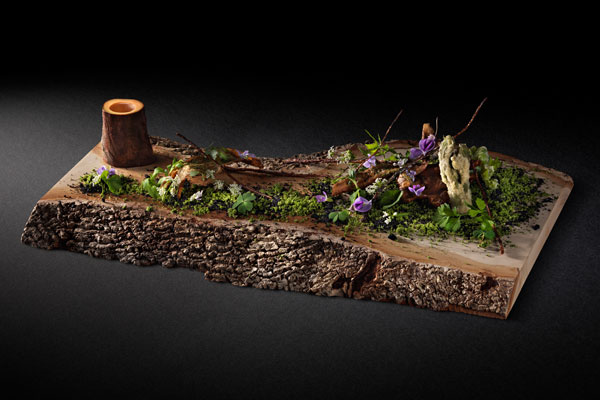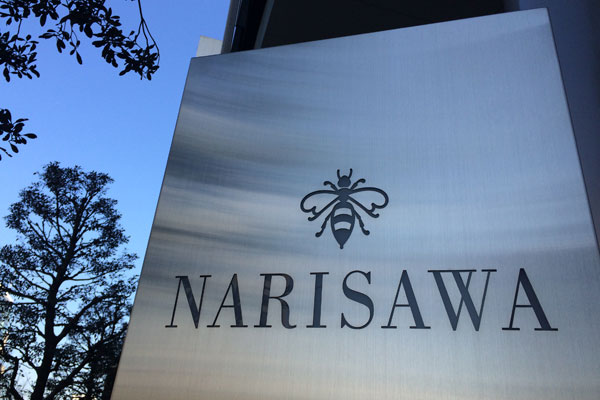Header: Chef Yoshihiro Narisawa and his eponymous restaurant's dining room (image: Sergio Coimbra)
As the sixth edition of Asia’s 50 Best Restaurants is revealed next month, a new award will be introduced: the Sustainable Restaurant Award. First announced at The World’s 50 Best Restaurants in 2013, until now it was only open to restaurants voted in the top 100 of the global list. The new accolade will recognise a restaurant in Asia making a difference through environmental and social responsibility.
As the first ever winner of the Sustainable Restaurant Award at The World’s 50 Best Restaurants in 2013, Narisawa in Tokyo, Japan, has plenty of lessons to teach. We talked to chef-owner Yoshihiro Narisawa about the importance and the challenges of building a sustainable restaurant.
“Eating is indispensable,” says Yoshihiro Narisawa, chef-owner of the eponymous restaurant in Japan’s capital. “To be able to continue eating, we need to think beyond nationalities and countries.”
Movements towards sustainability are developing all over the world and they are uniting chefs beyond geographical and cultural borders. Across the globe, chefs and bartenders are uniting against the use of plastic straws and in Cape Town, the likes of Luke Dale-Roberts from The Test Kitchen are battling a serious water shortage with innovative plates and water-reducing menus.
The World’s 50 Best Restaurants has been recognising and rewarding restaurants actively working to make themselves as sustainable as possible for the last five years with the Sustainable Restaurant Award. So far, four restaurants have received the accolade: Narisawa in 2013, Azurmendi in 2014, Relae in 2015 and 2016 and finally Septime in 2017. In 2018, the award is extended for the first time to Asia’s 50 Best Restaurants.
Nominations for the Sustainable Restaurant Award are sent by the restaurants voluntarily and are reviewed by the Sustainable Restaurant Association via their Food Made Good system, which rates each restaurant based on a number of criteria – including “sourcing,” “environment” and “society.”
Chef Narisawa has built his whole philosophy around respecting and emulating nature and nearly all aspects of his eatery reflect the theme. “When I opened my restaurant, 23 years ago, I visited fields, seas and forests all over Japan. I talked directly to the producers to source all ingredients,” says the chef. Seeing the daily struggles and efforts made by producers to deliver high-quality products changed his view of gastronomy and made Narisawa’s restaurant what it is today.
Narisawa's dish Satoyama Scenery (image: Sergio Coimbra)
Narisawa’s style of cooking is known as innovative Satoyama cuisine – “sato” meaning village or community and “yama” meaning forest in Japanese. “All ingredients from the fields are free from any chemicals. I purchase only the exact quantity I need, so there’s no food waste, and there is also no mediator – the producers receive 100%,” says Narisawa. The chef is deeply focused on marrying gastronomy and sustainability and creating a restaurant where people and nature “coexist in a symbiotic relationship.”
The restaurant’s menu changes seasonally and many dishes are inspired by a specific natural landscape or ecosystem, including creations such as Satoyama Scenery, Forest and Sea, Soil Soup and Water Salad. “I take inspiration from everything in nature, from scenery to wind, the temperature I feel on my skin, the scent of the air, the plants and the soil, the sound of the stream, the trees, the flavours of edible plants… I feel with my five senses,” says Narisawa.
When Narisawa won the Sustainable Restaurant Award in 2013, the SRA highlighted in its report that “Chef Narisawa has an intimate relationship with the local fishermen, often joining them for trips and always encouraging small-scale methods that allow baby fish to escape.” The judges were further impressed by the fact that the restaurant used fallen leaves and scrap wood to make plates.
According to the chef, everyone can play a part in making the world a little more sustainable. His advice is both for professional cooks and the rest of the world: “Visit the places where your ingredients come from. Listen to the local people and know the reality they have to face. Then, choose only the products that are really safe and sustainable,” he says. “If we don’t act correctly, the environment will deteriorate further.”
Narisawa in Tokyo, Japan (image: Sergio Coimbra)
Narisawa has implemented sustainable practices in all aspects of his restaurant and now hopes to inspire others to do the same. Here are some of the steps the restaurant has taken, as highlighted by the Sustainable Restaurant Association in its latest rating of Narisawa:
- – All ingredients come from Japan. The only ingredients sourced from abroad are coffee, chocolates, some spices and some wines
- – The chef has visited and vetted every producer
- – Pork and beef are free range, free of antibiotics and always from heritage breeds
- – Only Japanese fish from plentiful stocks are used
- – Milk, tea and coffee are organic
- – Staff take group vacations at least once a year to local areas to see and explore the natural environment
- – The chef regularly visits local community groups to talk about the importance of sustainable practices
- – Broken plates are repaired in-house for reuse with traditional Japanese techniques
- – All large used tablecloths are donated to local churches for reuse
- – Bones from meat are dried, cleaned and used as silverware in dinner service
The winner of the first regional Sustainable Restaurant Award for Asia’s 50 Best Restaurants will be announced at the annual awards ceremony on Tuesday 27th March 2018 in Macao.
Find Asia's 50 Best Restaurants on Facebook to stay up to date with the latest news on the upcoming event and follow The World's 50 Best Restaurants on YouTube, Instagram and Twitter.

